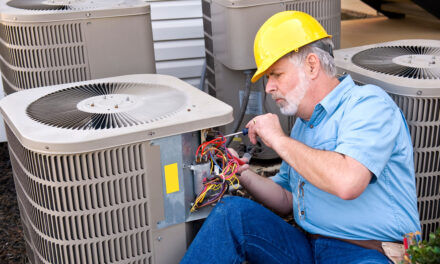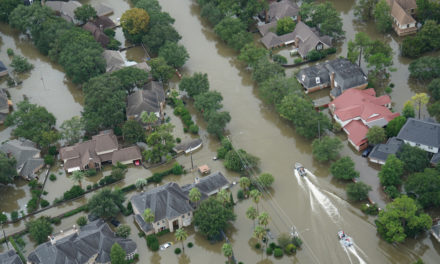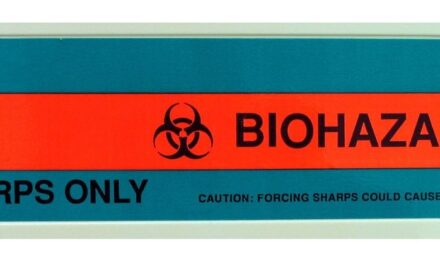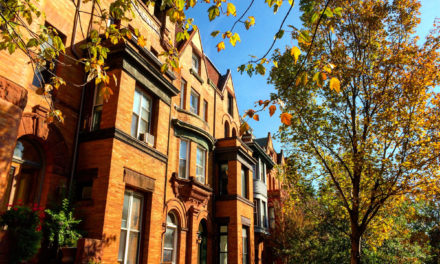Tracking Poor Outdoor Air Quality in Winter 2025: Insights from Fire.AirNow.Gov.
Long Term Care Facilities Can Take These Two Simple Steps to Maintain Indoor Air Quality During Wildfires
Forest fires and wildfires across the United States are dramatically reducing environmental air quality over much of the country, making the idea of stepping outside for fresh air impossible for many. If Senior Living operators don’t take action, they risk reducing the indoor air quality within senior care buildings, which can in turn put vulnerable residents at risk. Fortunately, there are a few simple steps to help you both improve your air quality and protect your staff and residents. Plus, new research from GPS® Air, a leading provider of needlepoint bipolar ionization (NPBI™) technologies, establishes how NPBI can enhance the filters in your current HVAC system.
Step 1: Assess the Threat of Wildfires in Your Area
The first and most critical thing you can do to maintain your indoor air quality during wildfires is to protect your community from the fires themselves. Pay attention to local news sources and government agencies for advice on how to prevent fires, what fires may be in your area and what you should do in response. The USDA Forest Service maintains an online map, but local services will have more detail and the most relevant information for you.
But beyond the fires, the smoke itself can be a real issue. According to the Centers for Disease Control (CDC), wildfire smoke can cause persistent coughs, headaches, shortness of breath, asthma attacks, and even cardiovascular issues such as chest pain and heart attacks. This is especially critical in Senior Living, as the smoke may worsen symptoms for people over 65 years of age, or with respiratory or cardiovascular diseases.
Even if you aren’t near a fire, the jet stream and natural air currents can carry the smoke chemicals and debris from the fires thousands of miles from their source. Bookmark this site to monitor up-to-date maps on fires, smoke coverage and air quality in your area.
Step 2: Protect Your Residents & Staff from Wildfire Smoke
When wildfire smoke lowers air quality in your area, there are several important steps you can take. The American Society of Heating, Refrigeration and Air-Conditioning Engineers (ASHRAE) has created a framework for protecting building occupants from smoke, published in the March 2021 edition of the ASHRAE Journal. Below are some of the activities you may consider taking:
Plan ahead if you can
Assess your filters and MERV ratings, ensure your system is running properly for the level of filtration and ventilation it was designed for, and weatherize your building envelope to prevent smoke intrusion. If you need help preparing your building, contact TELS Building Services.
Improve your filtration
If your HVAC systems allow for it, upgrade all filters in your system to at least MERV 13. Assess your air intakes to determine if you can temporarily add supplemental filtration with MERV 13 filters, tape and temporary ducting materials. Consider adding additional types of air purification products, such as portable HEPA air filters installed in rooms where air quality is a concern.
Balance the outside air coming into your building
An indoor air quality monitor that measures PM2.5 particles can help you determine if you need to take further steps, such as lowering the amount of outside air coming into your building. It may be beneficial to recirculate more air within your building rather than bringing in additional contaminants from wildfire smoke.
Keep pathogens in mind
Increasing ventilation is important for diluting the amount of infectious particles there may be in the air, but decreasing ventilation prevents wildfire smoke from entering your HVAC system. Portable air filters can reduce both exposure to pathogens and smoke in the air, and thus may be a good way to balance between these two requirements.
How to improve your current indoor air quality system
Your current filters may be having an impact on the pollutants associated with wildfire smoke, but they can be doing better. Needlepoint bipolar ionization can help air filters do a better job.
According to GPS®Air, a leading manufacturer of this technology:
One approach to helping air filters do a better job capturing particles of concern (including MPPS) found in the MERV Curve is to make them larger.
A safe, effective and proven way to accomplish this is through needlepoint bipolar ionization (NPBI™). This patented technology creates and releases ions into the airstream using a building’s existing HVAC system as the delivery method. When these ions disperse throughout a space, they seek out and form bonds with particles in the air through a well-established process called agglomeration. This process creates a snowball effect in which particles begin to cluster together. The larger a cluster of particles becomes, the easier it is for an HVAC system to filter it out of the air.
The benefits of ionization by including NBPI as part of a multilayered solution (ventilation and filtration) are many. Aerosolized particulate matter is removed faster. Indoor air spaces are cleaned more thoroughly.
Contact Our Air Quality Experts
Learn more about how the solutions on this page can improve the safety of your staff, residents and patients.
We may also share your information on a confidential and limited basis with trusted partners in connection with marketing and providing our products and services in accordance with our privacy policy.
Worried About IAQ in Your Long Term Care Community? Direct Supply Can Help.
Browse our array of indoor air quality solutions and reach out to us directly to connect with an account manager who can help you select the right solutions to meet your facility’s unique needs.



